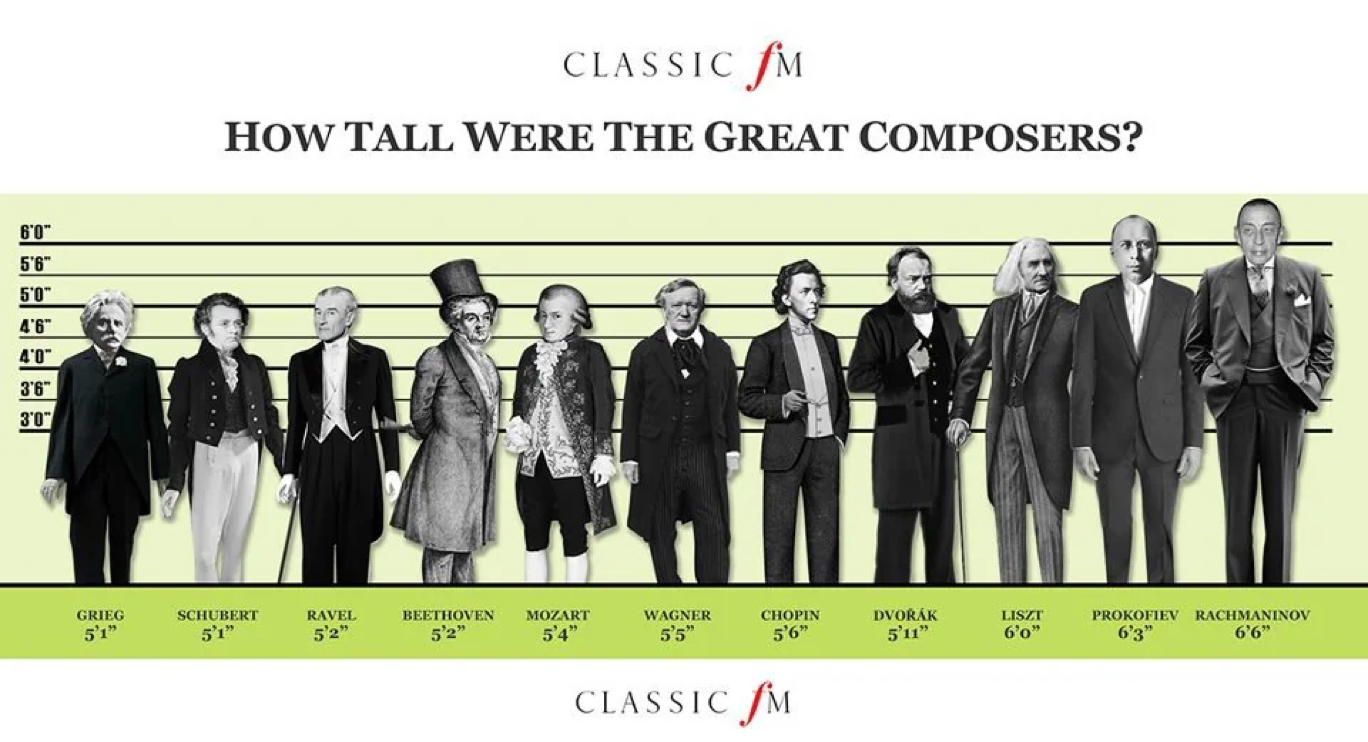STRAVINSKY AND HIS CONTEMPORARIES
ALEXANDER SCRIABIN
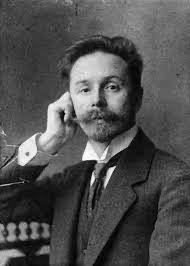
Poem of Ecstasy
(1908)
Stravinsky's mother was fond of nagging her son that he was not progressing as fast as Scriabin, and Stravinsky grew heartily sick of hearing it. Here are the final three minutes of Scriabin's Poem of Ecstasy, which was composed in the same year as Stravinsky's Fireworks. Can you hear the future Firebird composer in any of this music? The ending of this work is one of the most thrilling climaxes in the history of music, with the blazing C major chord that seems to last an eternity. Do you find this music more advanced than Fireworks? Firebird?
SERGEI PROKOFIEV
Piano Concerto No. 1
(1912)
Sergei Prokofiev was nine years younger than Stravinsky and was greatly influenced by the early music of Stravinsky. One of Prokofiev’s first mature masterpieces was his Piano Concerto No. 1, completed in 1912 at the age of 21. Stravinsky and Prokofiev had a complex relationship and there was certainly a rivalry between them in the early years of their career. Stravinsky once wrote about Prokofiev: “His performance was remarkable—but I have always liked his music hearing him play it—and the music had personality.” The Russian impresario Sergei Diaghilev called Prokofiev “my second son.” (Stravinsky was his “first son.”) Prokofiev on Stravinsky: “What is Stravinsky’s taste? What, devil take it, does he consider important? On his desk he has a portrait of Verdi; in the newspapers he steps forward in defense of Tchaikovsky; he tells me that in terms of contemporary music he can only listen to me.”
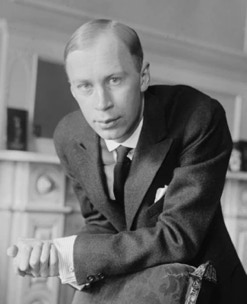
CLAUDE DEBUSSY
Prelude To The Afternoon Of A Faun
(1893-94)

Stravinsky held a deep admiration for the musical creations of his elder counterpart Claude Debussy, who surpassed him in age by two decades. In 1910, during Stravinsky's visit to France for the debut of his inaugural ballet, The Firebird, he received an invitation to dine at Debussy's residence, marking the initiation of their friendship. A photograph capturing the moment stands as a testament to the beginning of their bond. Prior to this encounter, Stravinsky was already familiar with several of Debussy's earlier compositions, while between 1910 and 1913, Debussy acquainted himself with Stravinsky's initial three ballets. Stravinsky's early compositions exhibit passages reminiscent of Debussy, exemplified in the initial measures of his opera The Nightingale, mirroring the opening notes of Debussy's Nuages. The reciprocal influence becomes evident, with Debussy incorporating elements from Stravinsky's style in a substantial manner. Notably, motifs from Stravinsky's The Firebird and Petrushka find a place in Debussy's lesser-known ballet Khamma. Moreover, Stravinsky's ballets, including the groundbreaking The Rite of Spring, appear to have sparked Debussy's exploration into octatonic harmony, as evidenced in the second book of his Piano Preludes.
BELA BARTOK
Romanian Folk Dances
(1917)
Often considered one of the three ‘titans’ of 20th-century music, Bela Bartok, along with Stravinsky and Arnold Schoenberg , strove to create a new type of music that moved away from the ultra-romantic excesses of the final decades of the 19th century. While Schoenberg developed atonal and dodecaphonic serial music, and Stravinsky ultimately settled into a NeoClassical style, Bartok found his source of inspiration in true folk music. Starting in 1904, Bartok made numerous trips throughout Eastern Europe, Turkey, and North Africa recording peasants playing and singing , and this formed the basis for his own works. This video example is a wonderful demonstration of Bartok making use of Romanian folk tunes and using folk instruments as well. Stravinsky made use of Russian and Ukrainian folk music in his own works, including The Firebird!
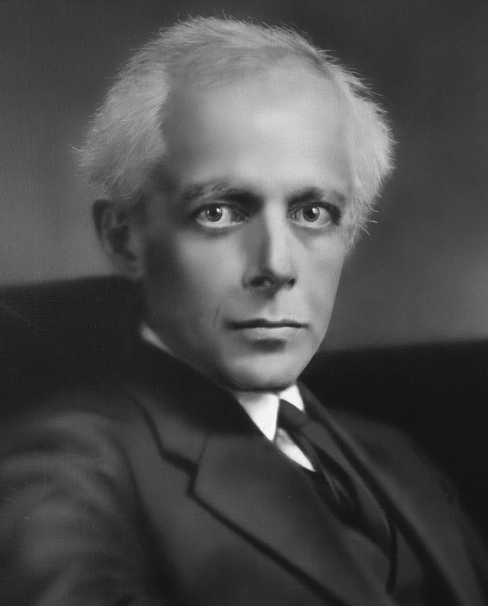
ARNOLD SCHOENBERG
Five Pieces For Orchestra
(1909)
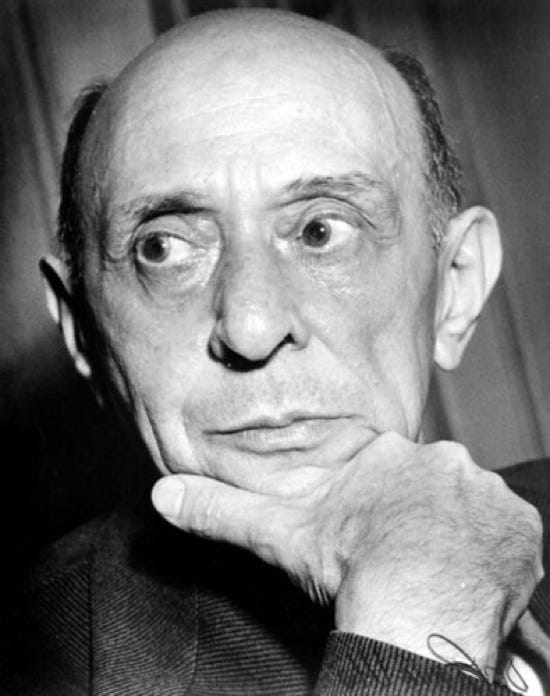
Arnold Schoenberg is credited with composing the first atonal piece of music in 1908, and he went on to develop the 12-tone system of composing. For most of their careers (Stravinsky and Schoenberg were roughly contemporaries, with Schoenberg being born in 1874 and Stravinsky in 1882) they were quite hostile to each other and developed the two main ‘camps’ of 20th-century music: Schoenbergian 12-tone music versus Stravinskyite NeoClassicism. Strangely enough, in the year Schoenberg died (1951), Stravinsky began to compose Schoenbergian serial music:—until his death in 1971! For more on the Stravinsky-Schoenberg rivalry, go to the COMMENTARY section of this presentation! Fascinating!
MAURICE RAVEL
Alborada del gracioso
(Orchestral version 1919)
Maurice Ravel (1875-1937) was one of the most important composers working in France from at least 1900 through the mid 1930s. A number of his works are now iconic masterpieces of the 20th Century, including Daphnis et Chloé, Boléro, Mother Goose Suite, Rhapsodie espagnole and others. Ravel and Stravinsky were close friends and admired each other’s work. Although Ravel is always classified as an “Impressionist” composer, his work is not easily categorized. There are many NeoClassical aspects to his work and he employed jazz harmonies and rhythms in many of his compositions, such as his Violin Sonata (‘Blues’), the Piano Concerto in G Major, and his opera L’enfant et les sortilèges.

A rare photograph of Stravinsky (left) and Maurice Ravel
SERGEI RACHMANINOFF
Symphony No. 2
(1907)
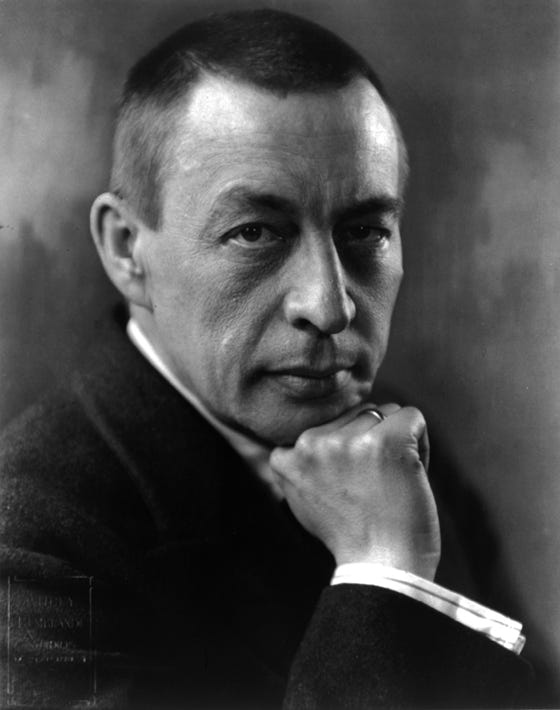
Sergei Rachmaninoff (1873-1943) was one of the greatest pianists of the 20th Century as well as a conductor and a remarkably successful composer. He was also one of the tallest composers in music history (see chart below!) Rachmaninov lived well into the mid-20th Century but never embraced the modernism of his colleagues and contemporaries Stravinsky, Schoenberg, Prokofiev, Hindemith, Bartok, etc. His music was firmly rooted in late 19th-Century Romanticism. His gloomy outward appearance and the fact that he ‘never smiled’ led to Stravinsky calling him “a six-and-a-half foot scowl”. Like Stravinsky and Schoenberg, Rachmaninoff emigrated to the USA and wound up in the Los Angeles area. In 1942, Rachmaninoff invited Igor Stravinsky to dinner at his home in Beverly Hills, the two sharing their worries of a war-torn Russia and their children in France.
